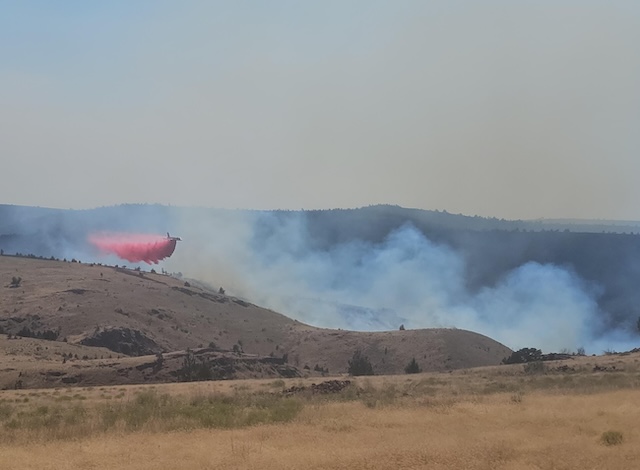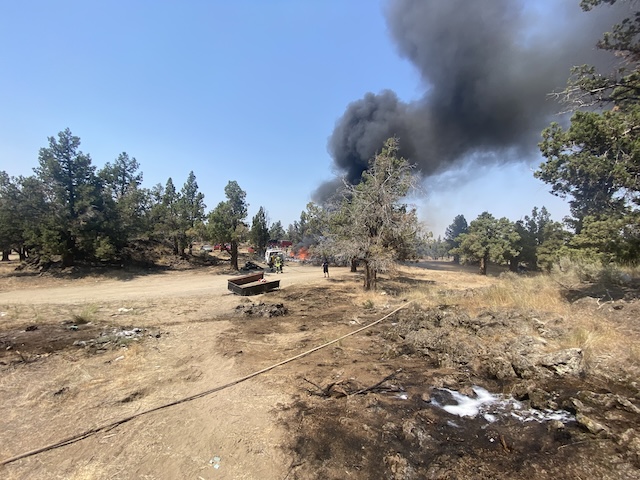Late winter storms boost Central Oregon snowpack, delighting skiers, irrigators
Published 5:30 am Thursday, March 7, 2024

- Frozen plants become sculpted snow mounds, partially illuminated by the afternoon sun in Bend on Jan. 15.
In Central Oregon, mountaintops are having a moment. A series of storms that have barreled across the region over the past week have helped boost snowpack levels well above normal — good news for both skiers and irrigators.
As of Wednesday snowpack in the Upper Deschutes and Crooked River basins was 114% of normal while precipitation was also 114% of normal, according to data compiled by the Natural Resources Conservation Service. The recent storm dropped as much as 4.3 feet at snow-measurement stations in the central Cascades.
Trending
“There is about a month until the normal timing for peak snow accumulation is reached, and most stations in the Upper Deschutes are on a good trajectory towards that normal peak,” said Matt Warbritton, supervisory hydrologist with Natural Resources Conservation Service.
Here’s how snowpack is measured and why it’s important in Central Oregon
“Continued snow accumulation and freezing to below-freezing temperatures are needed to keep building and sustaining snowpack throughout the rest of March,” he said.
El Niño Impacts
Trending
The above-normal snowpack comes amid a strong El Niño winter that has battered California with relentless snowstorms in recent weeks. Strong El Niños sometimes leave the Pacific Northwest with warmer and drier conditions so the recent snowfall in Oregon has been a pleasant surprise.
Warbritton said that the past three months of winter have generally been typical of El Niño conditions around the state, with periods of warming and snowmelt, and the increase in snowpack in some areas is not unusual.
“Some regions are bucking the trend a bit for what is considered more average for a strong El Niño winter,” he said.
The sudden late winter blast has been a welcome sight for skiers following a winter of inconsistent snowfall. Mt. Bachelor ski area has amassed a 129-inch base and 308 total inches of snow for the season. Hoodoo Ski Area has an 83-inch base and 208 inches for the season.
Lauren Burke, Mt. Bachelor’s director of marketing and communications, said, “We expect to be open daily until at least May 26. “There is more snow in the forecast next week. Spring skiing and riding is going to be all-time up here this season.”
Watching the reservoirs
Reservoir watchers are also pleased with the snowpack bump. Current snowpack levels should push Wickiup Reservoir past 150,000 acre-feet by the start of the irrigation season next month, according to Jeremy Giffin, the Deschutes Basin watermaster.
“The last time we broke 150,000 acre-foot was the spring of 2018,” said Giffin. “So this is looking like the best supply out of Wickiup for the last six years.”
As of Monday, Wickiup Reservoir had climbed to 70% full, a noticeable bump compared to the same period a year ago when it was just 59% full. Historically, the reservoir is 89% full on March 4, so levels are still well below average, the result of multiple years of drought.
Elsewhere in the basin, Crescent Lake, which supplies water to the Tumalo Irrigation District, was 16% full on Tuesday compared to 13% at the same time a year ago. Prineville Reservoir, which supplies the Ochoco Irrigation District, was 76% full compared to just 12% a year ago.
“It’s not a huge water year, but after several years of prologued drought, it is definitely good news,” said Giffin.
Natural flow in the Deschutes River won’t rise much in the short term, but there could be a bump in the latter part of summer, he said.
The above-normal snowpack is welcome news for irrigation districts that have suffered several years of reduced water allocations.
“We’re pleased with the snow-water equivalent this winter’s storms have delivered, and we hope it provides some relief for our basin farmers and improves river conditions for fish and wildlife this coming summer,” said Jer Camarata, general manager for Swalley Irrigation District.
Raising the river
The irrigation season schedule begins with a ramp-up of water releases from reservoirs in late March. For Wickiup, that means bumping the flow from the current level of 107 cubic feet of water per second to 600 cfs by April 1.
Reaching that level meets ecological requirements for the Deschutes Basin Habitat Conservation Plan, which calls for the gradual increase of flows in spring to support Oregon spotted frog habitat. The dam operator at Wickiup Reservoir typically makes two changes per day until the 600 cfs level is reached.
The ramp-up is a gradual process to prevent erosion of the Deschutes riverbanks and to prevent spotted frog egg masses from washing away.
Spring also brings water allotment assignments for the irrigation districts. As watermaster, Giffin will assign account balances to irrigation districts based on the water availability. Once they know how much water is in their account for the season, irrigation districts then set allotments for their patrons.
“We have agreements that we’ve been using for 100 years to divvy up the reservoir allocations,” said Giffin. “We will let people know what they have in their account as we bring the river up and turn on the canals.”








